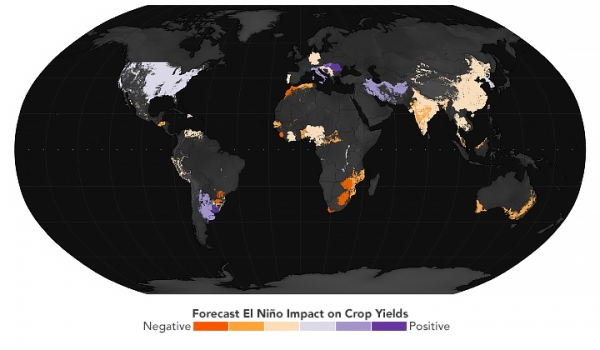The ongoing El Niño is disrupting rainfall patterns across the planet, with mixed consequences for food production.
The ongoing El Niño is disrupting rainfall patterns across the planet, with mixed consequences for food production. Too much rain in some places, and too little in others, is projected to affect crop yields and leave 110 million people in need of food assistance, according to scientists who are part of the Famine Early Warning Systems Network (FEWS NET).
El Niño is a natural climate phenomenon characterized by warmer-than-normal sea surface temperatures in the central and eastern tropical Pacific Ocean. This cyclical warming of surface waters functions like a boulder in the middle of a stream, disrupting atmospheric circulation in ways that shift rainfall patterns. Wetter conditions are expected in the southern United States and the Horn of Africa and drier conditions are likely over southern Africa, Latin America, Australia, and parts of southeastern Asia.
This year’s El Niño event, which is forecast to continue gaining strength through the end of 2023 before it dissipates by mid-2024, is expected to contribute to high levels of food insecurity in certain regions. The map above, developed by FEWS NET partners, shows the projected impact of El Niño on key commodity crops, including wheat, maize (corn), rice, soybean, and sorghum. The map was based on an analysis of historical crop yields and climate data from 1961 to 2020. Scientists from NASA Harvest and NASA’s Goddard Space Flight Center, NOAA, the University of Maryland, and the University of California Santa Barbara’s Climate Hazards Center contributed to the development of the map.
Read More: NASA Earth Observatory
Photo Credit: Michala Garrison/NASA Earth Observatory




